FORMLOS Reintroduces Bitumen and Revolutionizes Object States
is bringing objects to life with bitumen. And what exactly is bitumen? Well, it’s a sticky, black, viscous liquid–like tar–that moves very, very slowly. In the past, the inky stuff has been used for paving streets, waterproofing ships, and it even played its hand in the development of the first photograph: French scientist Joseph Nic©phore Ni©pce slathered the mixture on pewter plates before exposing them to light. In other words, it’s good stuff. And, like the infamous Snapple commercials, perhaps now more infamous due to Donald Trump’s Celebrity Apprentice, the good stuff just got better.
In Laura Jungmann’s gallery.
Karlsruhe University of Arts and Design student Laura Jungmann appropriated the pitch for her FORMLOS Collection of limited-edition pieces, which includes a picture frame, ceiling lamp, and a model of the duomo di milano–all of which transform before your eyes, albeit very, very slowly. It might be the aesthetic equivalent of watching an egg cook on an Arizona roadway.
But the philosophy behind FORMLOS is what’s intriguing. Part of the university’s collection of objects known as kkaarrls, Jungmann’s exhibit is the result of “the coursework of young European designers at the HfG Karlsruhe.” All the kkaarrls objects share a desire for “shaping the future”–and FORMLOS does it both literally and figuratively. Through the use of bitumen, Jungmann seeks to avoid “new trends and tendencies” that she thinks are becoming outdated as soon as they are introduced, generating “an aesthetic half-life that tends towards zero.” Jungmann hopes her chosen material will circumvent the “design of exhaustion” (I’m borrowing the term exhaustion as defined by postmodern writer John Barth). Bitumen, thanks to its inherent properties, “is completely removed from the fate of up-to-the-minute style because it is constantly changing.”
Duomo and Block. Designed by Laura Jungmann.
In Laura Jungmann’s gallery.
Duomo and Animals. Designed by Laura Jungmann.
Bird. Designed by Laura Jungmann.
When refrigerated, objects made of bitumen (or covered in the stuff) will retain their shape. However, when exposed to room temperature, the bitumen starts to shift and move, transforming itself over time–slowly, ever so slowly, so slowly that you’ll not spy it in motion. The result is that Laura Jungmann’s designs take on a life of their own. For example, her pendant lamp, which is constructed of glass that is then coated in bitumen, begins as an interesting black ovoid. As time passes, the exposed bitumen causes the piece to drip, forming stalactites of rich, shiny, oil-slick drippings that eventually pool on the floor. Mirrors loose their shape, monuments melt, and objects dematerialize. Jungmann has even made a political statement through bitumen: because it resembles oil, the material can be used to bring to mind the recent ecological disaster off the Louisiana coast, as in Jungmann’s piece that shows a bird dissolving into a pitch-dark puddle. FORMLOS toes the line between art and design–and says something very interesting about transient states and about the fickle nature of desire. Jungmann explains how FORMLOS and bitumen generate metamorphosis, and consequently avoid the temporary nature of current design: “Rigid, defined bodies thus lose their form and become unique and consequently aesthetically long-lived objects.”
via Moco Loco
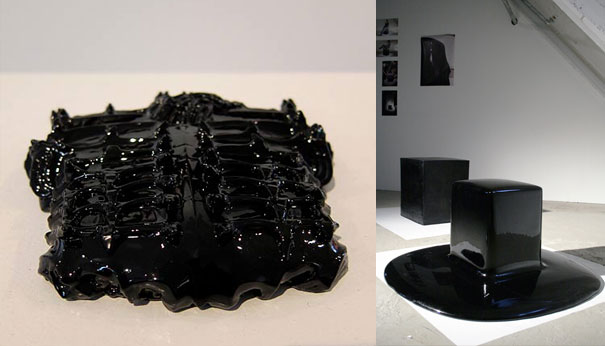

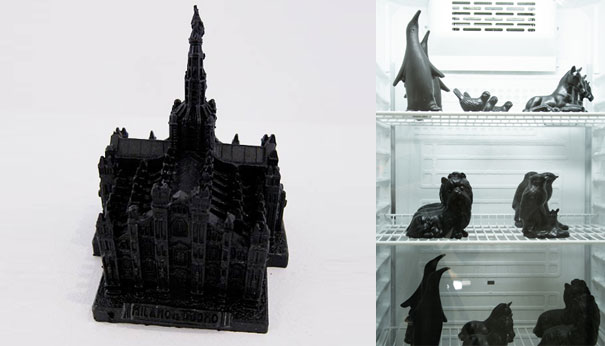

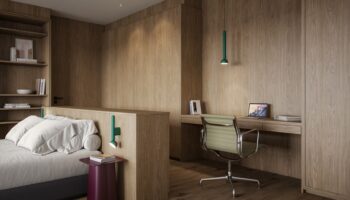
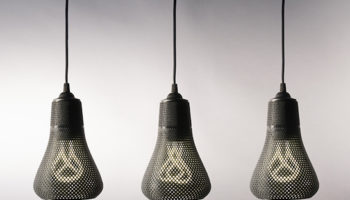
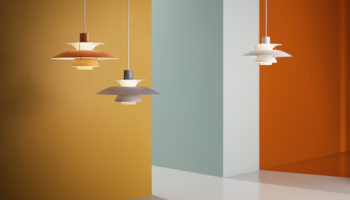

Leave a Reply